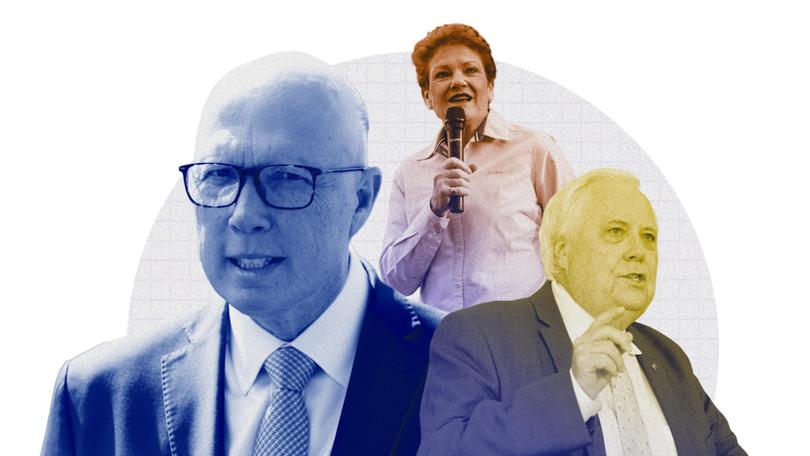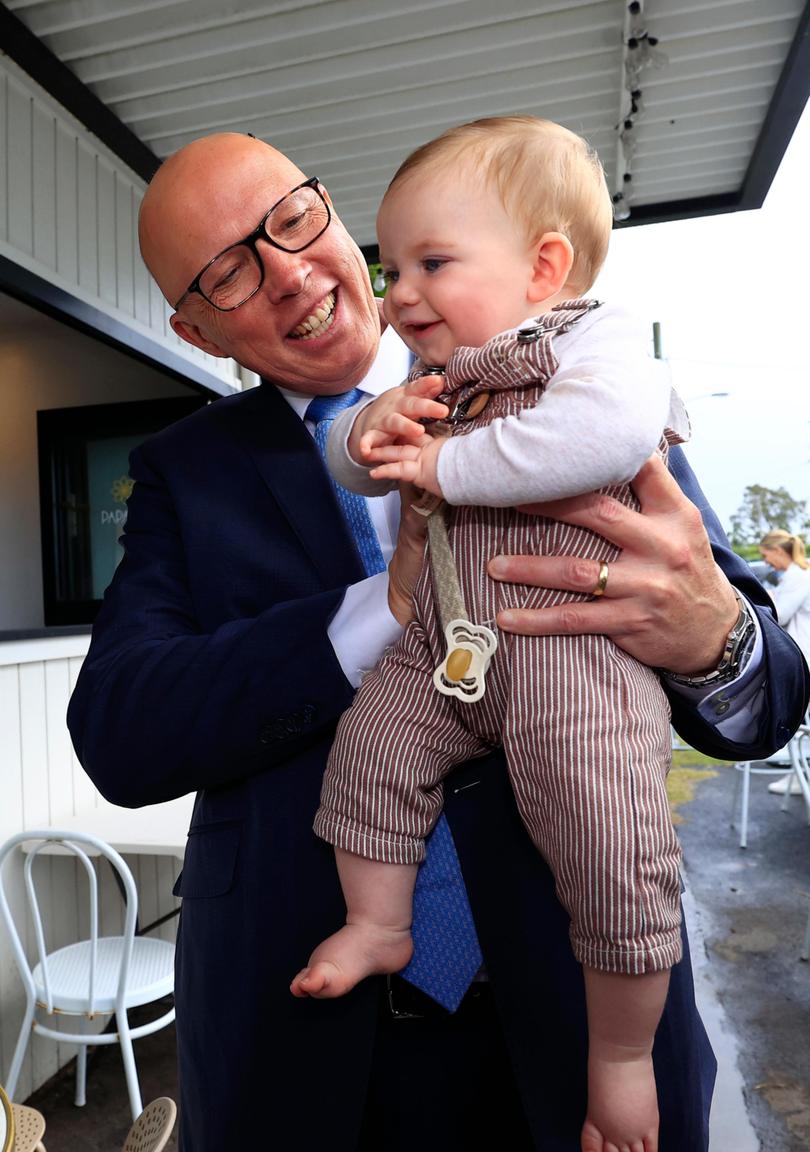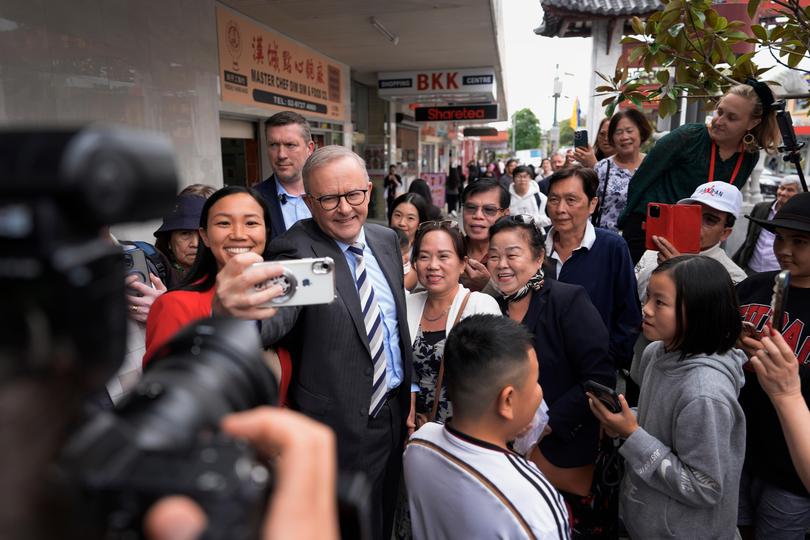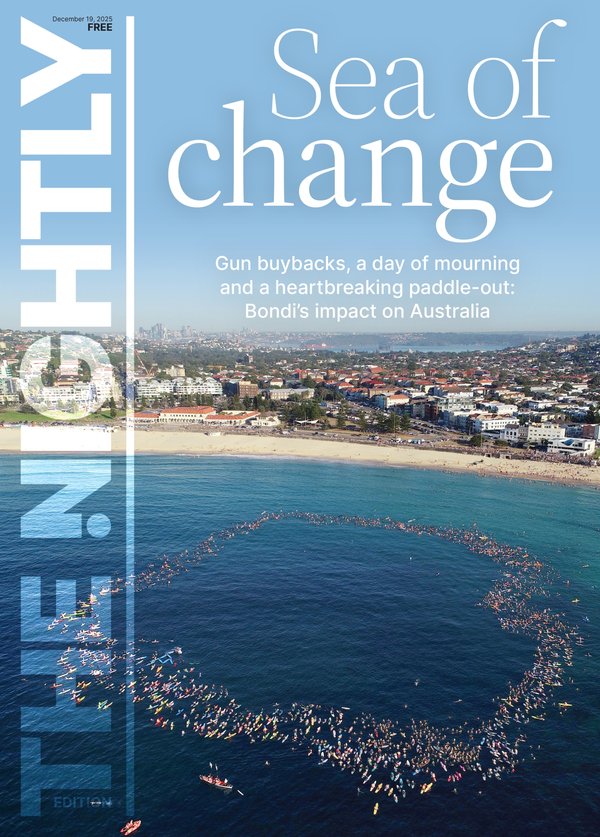ANDREW CARSWELL: As voters shift to minor parties, it all hinges on preferences

Strap yourself in, this thing still has a few more twists and turns to go.
Because, Toto, we’re not in 2022 anymore.
Anyone clinging to the scattergun of bleak published polls to predict a repeat of the Coalition’s 2022 disaster is setting themselves up for a surprise on Saturday night.
Sign up to The Nightly's newsletters.
Get the first look at the digital newspaper, curated daily stories and breaking headlines delivered to your inbox.
By continuing you agree to our Terms and Privacy Policy.Australians casting votes for One Nation and the bizarrely named Trumpet of Patriots are about to up-end a few expectations. Not necessarily change the result, but certainly tighten the final margin.
For the first time, the combined primary vote for these much-maligned right wing minor parties will likely match or eclipse the Greens’ national tally which is in retreat, throwing a late spanner into an election that had been trundling toward the quiet, uneventful return of an incumbent.
The bulk of that surge will be carried by One Nation, which, according to this week’s Newspoll, has lifted its primary vote to about 8 per cent, up from 5 per cent in 2022.
But that’s just where the fun begins.
At the last election, preferences from right wing minor parties broke 65–35 to the Coalition, with many centre-right voters unwilling to reward the Morrison government with their preferences. Protest parties doth protest much.
On Saturday, preference flows to the Coalition are expected to be dramatically stronger — and crucially, off a higher base — with early signs suggesting preferences from One Nation and Clive Palmer’s trumpet gang will sit about 75 per cent, a full 10 points higher than in 2022.
Such an increase would almost mirror the impact of the Greens’ preferences to Labor, which, coincidentally, will be flowing from a lower base this time due to their shrinking primary vote, particularly in WA.
This dynamic is not being picked up in the vast majority of current polls, which oddly determine preference flows based on 2022.
This upheaval in preference flows means Coalition candidates no longer require a substantial lead on primaries to win. It’s long been a frustration that, with minor parties bleeding their vote and Labor and the Greens swapping preferences like starry-eyed lovers, winning a seat often demanded a primary vote north of 40 per cent. In 2022, the average Coalition primary in a seat they won was 41 per cent.
Now, in several key outer-suburban seats, this realignment makes it possible that a primary vote of just 35 per cent could be enough to scrape over the line.
Herein lies the message: any Federal election poll still basing outcomes on 2022 preference distributions is likely giving a false picture of what’s happening in some key seats.

“There are three golden rules in polling: you must have a robust sample north of 800 voters, you have to name the exact candidates on the ballot, not just the parties, and you have to ask who they’ll preference this time,’’ JWS Research founder John Scales said.
“If the poll doesn’t tick those three rules, ignore it.”
Note, this picture only marginally enhances the Coalition’s chances of up-ending history and securing an unlikely win on Saturday.
Because the task remains monumental. It would make the 2019 “miracle” election seem like the under card to the main event. It’s scaling Everest without oxygen. Or legs.
But it does improve their chances of outperforming the low expectations the media have set, pushing the Albanese Government deeper into minority, and killing off the growing hype of a returned Labor majority.
At the very least, it’s not going to be as bad as the published polls suggest.
This is particularly relevant in outer suburban seats around Melbourne, traditional Labor strongholds. Despite Labor’s noticeable recovery in Victoria, the further you get from the CBD, the more the party remains on the nose.
Electorates including Hawke, Gorton, Bruce, McEwen and even Bendigo are in play, where anger at Albanese and fury at State Labor may overcome any hesitation about Peter Dutton.
Why would Labor be spending hundreds of thousands of dollars in Gorton — a seat with a 10 per cent margin — if it wasn’t picking up the same trend?
There are likely to be substantial swings across this swathe of peri-urban electorates, but whether they’re big enough to flip seats will go a long way to determining whether Albanese’s likely minority turns into a messy kaleidoscope of colours, or whether a miracle is in the making. Maybe next time?

The same preference dynamics are playing out in NSW outer suburban seats like Werriwa and Whitlam, though Labor is far better placed in the State than in the Victorian bin fire.
In Queensland, Labor is growing increasingly confident of pinching a few seats to offset losses elsewhere, with Leichhardt and Brisbane looming as opportunities.
But it’s in WA where minor party preferencing takes an interesting turn.
Renewed support for One Nation and strong flows to the Coalition are showing up in Bullwinkel, Pearce and Tangney, while the Greens’ vote continues to slide, hurting Labor’s chances of holding ground.
A demise in the Greens vote? It’s kind of what happens when you threaten the livelihoods of West Australians, time and time again.
No surprises there.
